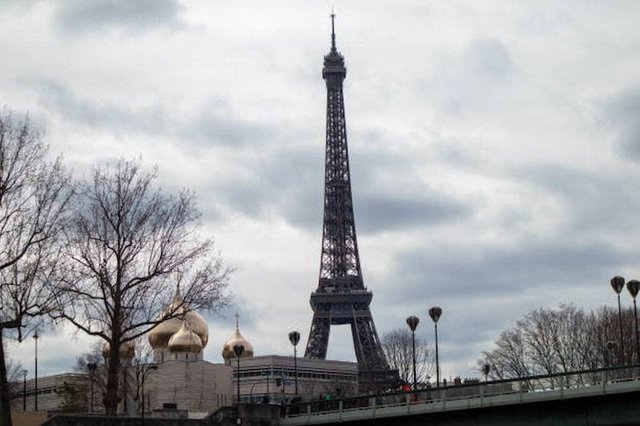Top 5 must visited landmarks in Europe
Top 5 must visited landmarks in Europe
Europe is a historical, cultural and architecturally stunning continent that is frequently recognized as the birthplace of Western civilization. Europe is the continent with the most cultural and geographical diversity but having the second-smallest landmass. Europe's landmarks which span from the ancient Ural Mountains in the east to the frigid landscapes of Iceland in the west, tell the tales of centuries-old empires, innovative cultural movements and ground-breaking discoveries. These sites provide as windows into the colorful past and active present of the continent giving you a sense of the essence of Europe as you set off on your travels.
From the sun-drenched Mediterranean in the south to the Arctic Ocean in the north, the continent is home to a variety of climates and topographies. Asia borders it on the east, and the Atlantic Ocean borders it on the west. The Bosporus Strait frequently serves as a line between the two continents. In addition to being magnificent pieces of architecture, Europe's landmarks serve as reminders of the political and cultural changes that have molded the continent throughout the centuries. Your vacation to Europe Trip will be an amazing historical adventure through nearly 50 independent states, each with its own distinct legacy. Each site will show a different aspect of the complex fabric that is Europe.

Here are the Top 5 must visited landmarks in Europe
1. Paris's Eiffel Tower:

Standing tall over the picturesque city of Paris the Eiffel Tower is a well-known representation of both the city and all of France. This striking 1,063-foot iron lattice building is situated in the 7th arrondissement on the city's southwest edge. Originally intended to be a temporary building, the Eiffel Tower was designed by French engineer Gustave Eiffel for the 1889 World's Fair. But because of its ground-breaking design and the wonder it evoked, it was impossible to demolish, and it soon became an indisputable part of the Paris skyline.
2. London's Big Ben:

Big Ben is one of Europe's most identifiable landmarks, with its distinctive four-faced clock and loud chimes. Big Ben, 96 meters tall and a symbol of England since it was finished in 1859, is situated at the north end of the Palace of Westminster in London. Originally referring to the Great Bell inside the clock tower, the moniker "Big Ben" has come to refer to the complete building, which is now a well-loved symbol of British history and culture. Big Ben's chimes have been played on British radio to mark the hour since 1923, and the tower boasts one of the largest and most accurate clocks in the world.
3. Rome's Colosseum:

Rome, Italy's Colosseum is one of the most well-known and enduring reminders of antiquity. Constructed in the year 80 AD, this enormous amphitheatre held the record for the most seats, accommodating up to 80,000 people. In ancient Rome the Colosseum served as the hub of entertainment, showcasing fake sea wars, animal hunts and gladiatorial combat. Its circular design, complete with massive arches and tiers of seating is a magnificent example of Roman engineering. The Colosseum serves as a moving reminder of Rome's mighty past even in modern times. Even after being subjected to centuries of abuse, including damage from stone robbers and earthquakes, it continues to be a potent reminder of the city's lengthy past.
4. Neuschwanstein Castle, Germany:
Neuschwanstein Castle, perched high in the Bavarian Alps, is frequently referred to as the "fairy-tale castle" because of its fascinating architecture and gorgeous surroundings. Built in honour of composer Richard Wagner and inspired by his operas, especially "Lohengrin," the castle was commissioned by the eccentric King Ludwig II of Bavaria in the 19th century. Neuschwanstein is a comparatively recent building, finished in 1886 following King Ludwig's death despite the look of a medieval fortress. Neuschwanstein is one of the most visited landmarks in Europe because of its magnificent paintings towering turrets, and panoramic views of the surrounding countryside. Numerous artists have drawn inspiration from the castle's dreamy style, which even served as the model for Disney's Sleeping Beauty Castle.
5. Athens' Parthenon:
One of the most significant and enduring emblems of ancient Greece is the Parthenon which is located atop the Acropolis hill in Athens. This marble temple honouring Athena Parthenon, the city of Athens' patron deity was constructed in the fifth century BC. For millennia, the Doric columns and sculptural elements of the Parthenon along with its harmonious proportions have shaped Western architecture. The enormous gold-and-ivory statue of Athena that was formerly kept at the Parthenon which was also utilized as a temple and treasury has since been lost. The Parthenon is a monument to the creative and architectural prowess of the ancient Greeks that still survives today. A glimpse into the civic and spiritual life of Athens during its Golden Age can be found in its ruins.
Conclusion:
These five locations serve as vital experiences that capture the essence of Europe's rich history, varied cultures, and stunning architecture as you set off on your travels. Every location provides a different window into the history of Europe from the imposing grace of the Parthenon in Athens to the majestic soaring Eiffel Tower in Paris. Big Ben's ageless charm, the Colosseum's legendary past or Neuschwanstein Castle's enchanted beauty, these sites represent the countries and civilizations that fashioned our world and are more than just tourist destinations.
As you embark on your travels these five destinations serve as essential experiences that encapsulate the spirit of Europe's rich history, diverse cultures and breath-taking architecture. From the majestic, towering Eiffel Tower in Paris to the overwhelming beauty of the Parthenon in Athens, each destination offers a unique perspective into the history of Europe. The timeless allure of Big Ben, the storied history of the Colosseum, or the enchanting splendour of Neuschwanstein Castle these locations are more than just tourist attractions; they are symbols of the nations and civilizations that shaped our globe.